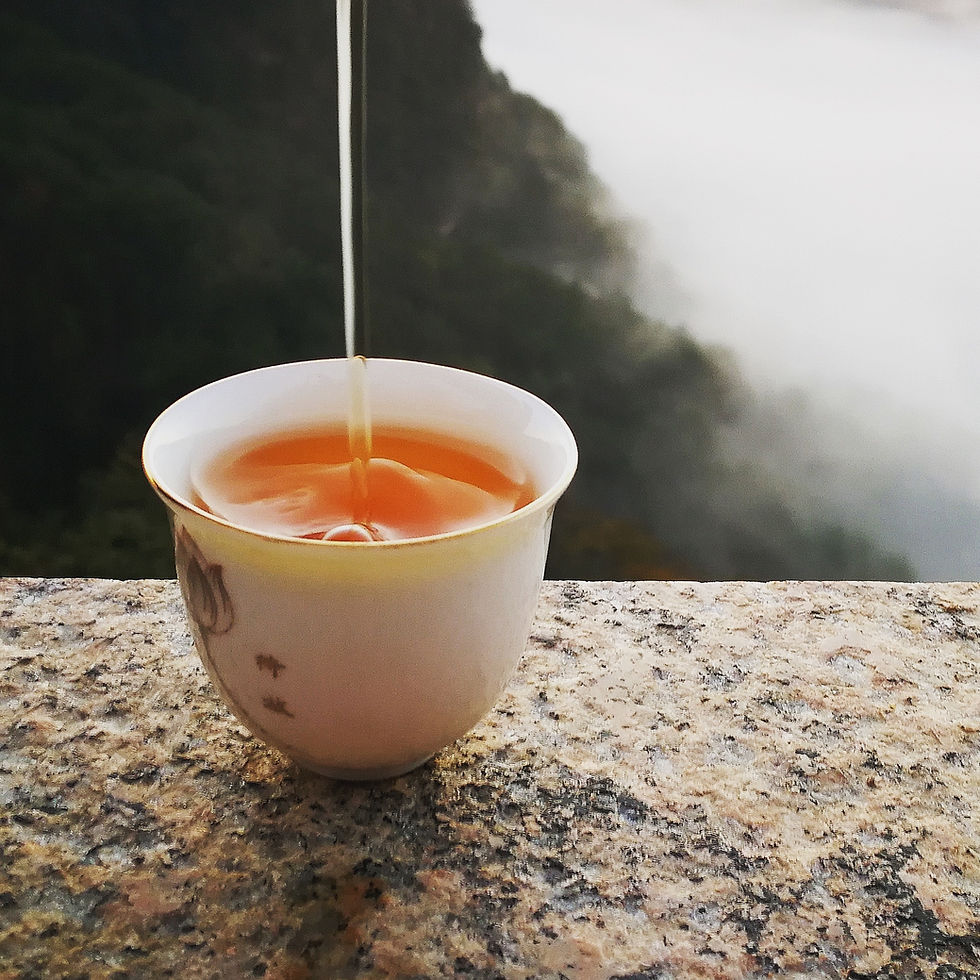Blog 78: Why Does Your Tea Taste “Numb/Dry”? (Part I)
- Valley Brook Tea

- Dec 18, 2018
- 3 min read
In our last blog, we discussed the “muddy” tea soup and the cause of it (click here for Blog 77). In general, a muddy tea soup is not a good sign (with exceptions including some black tea, white tea and green tea, see explanation here). Usually, there is also one extra sign accompanied with the muddy tea soup: the numb taste.

Have you ever tasted sea water? What was that experience feel like?
If you’re curious as me, you’d understand that sea water cannot be simply described as “salty”. Yes, it tastes salty, but that’s only half of the experience. There is a certain “dryness” in sea water that you can feel in your mouth as if your entire oral cavity is closing in. This is also the “numb” feeling that lingers in your mouth. It’s exactly the opposite of “mouth-watering”.
You see, when we describe sea water, we’re actually talking about two things: the flavor and the mouthfeel.

When judging the quality of a tea and its tea-making, both the “flavor” and the “mouthfeel” are important. A good tea needs to deliver a balanced flavor and a good mouthfeel.
Normally, tea lovers only focus on the “flavor” and overlook the “mouthfeel”. For tea drinkers who never have the chance to experience better teas, they might even think that authentic teas are supposed to taste numb.
The numbness is the bad gustatory experience. The numbness of a bad tea tastes similar to chewing grape skins. It feels almost like your mouth and tongue are covered by a thin layer of film that is blocking your taste buds from breathing.
Compared to the muddiness of the tea soup, the numbness of the taste is far more difficult to visualize. After all, the muddiness can be observed, but the taste can’t be verified without taking a sip.

If your tea tastes numb, there are 3 possible reasons: the natural environment, the tea-making and the tea infusion. (Due to the length of the blog, we’ll separate this blog into multiple parts.)
The numbness can be the direct result of too much tea polyphenol content, and the polyphenol content is the result of high temperature and overexposure to sunlight. A tea that contains too much polyphenol would taste bitter and numb.
However, since all teas have tea polyphenol, what makes some tea tastes numb while other don’t?
In Mr. Lu Yu’s The Classic of Tea, he raised an important point on the quality of tea: only those tea plants grow on sunny cliffs under the shady woods produce best fresh leaves. In modern days, this theory also applies to the tea plant growing environment.
Tea plants need sunlights but don’t prefer direct sunlights all the time. The best tea mountain fields have a dense vegetative cover which provides a layer of “umbrella” that shields tea plants from sunlight overexposure. Tea plants that grow in these good mountain fields, generally contain an moderate level of tea polyphenols.

But not all tea mountain fields share the same condition. Those tea mountains that are on open fields generally don’t have enough vegetative cover to protect tea plants. While looking impressive, tea plants that grow on open fields receive too much sunlight and ultimately produce a high level of tea polyphenol content. Tea produced with those overexposed leaves would eventually taste numb.

This is essentially why tea production values where fresh leaves are harvested. Fresh leaves from a renowned tea-leaf producing area (e.g. mountain fields within the Wuyi mountain preservation area) are sold at a much higher premium than fresh leaves from outside the preservation area in the Wuyi region.
In our next blog (Blog 79, coming this Thursday), we’ll continue this topic and explain why bad tea-making and tea infusion skills can also result in the numb taste in tea.
We hope you enjoyed today’s blog. As always, if you have questions or suggestions, please leave a comment, tweet us @valleybrooktea or email the author directly at zhang@valleybrooktea.com. Please also follow us on Instagram @valleybrooktea and join our mail list to get our daily tea updates and our latest promotions!




Comments